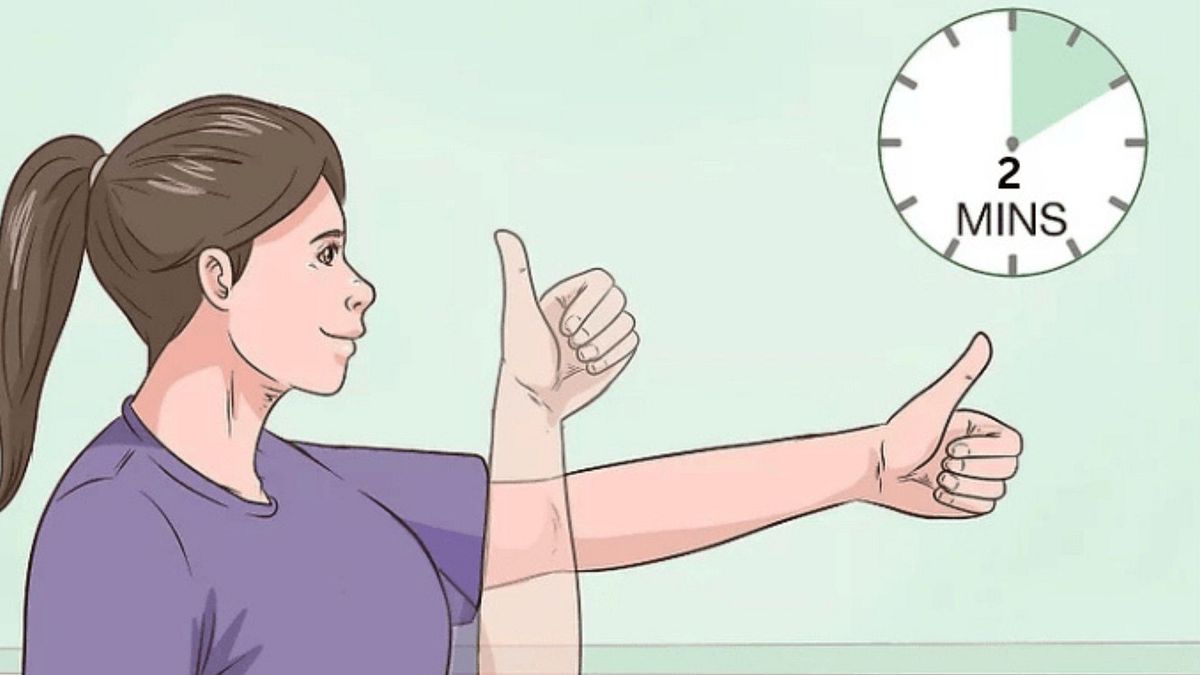Why Should You Practice Eye Yoga Every Day?

In modern life, the eyes are often the most neglected part of our body
In today’s world, our eyes work continuously from morning till night — from computer screens and smartphones to artificial lighting. As a result, we often experience dryness, strain, blurriness, and loss of focus. That’s why eye yoga exercises have become a recommended daily routine by ophthalmologists, helping stimulate blood circulation, enhance vision, and relieve eye fatigue naturally.
Eye yoga is more than just a relaxation technique. These exercises help activate the muscles around the eyeball, regulate accommodation, and improve coordination between both eyes. When practiced regularly, you’ll notice clear improvements:
- Gentle movements stimulate tear production, keeping your cornea naturally hydrated and reducing dryness and fatigue.
- Eye movements and relaxation each morning improve blood flow, providing more oxygen to the retina.
- Eye muscles become more flexible, enhancing your ability to focus at different distances.
- Relaxed eyes help calm the visual nervous system, improving concentration during the day and sleep quality at night.
According to experts, just 5–10 minutes of daily eye exercises can help your eyes regain energy after a long night’s rest and get ready for a productive day.
Preparation Before Practicing
Before you begin, choose a quiet, well-ventilated space with natural light. Sit up straight, relax your shoulders and neck, and maintain steady breathing. Deep breathing during practice helps deliver more oxygen to your eyes, enhancing relaxation.
You don’t need any special equipment — just clean hands, a calm mindset, and focus on how your eyes feel during each movement.
Morning Eye Yoga Exercises

Eye yoga exercises bring surprising benefits to your vision health
Exercise 1: Palming Relaxation
Rub your palms together until they feel warm, then gently cup them over your closed eyes. Hold for 15–20 seconds and breathe deeply. Repeat 2–3 times. The warmth and darkness help relax the optic nerves, “resetting” your eyes after a night’s rest.
Exercise 2: Gentle Eye Opening and Closing
Open your eyes as wide as possible, then shut them tightly. Repeat 15–20 times. This simple action stimulates tear glands, reduces dryness, and strengthens eyelid muscles.
Exercise 3: Directional Eye Movement
Sit upright and keep your head still. Move your eyes in sequence: left – right – up – down. Repeat 10 times. This classic ocular exercise enhances flexibility and expands your range of vision.
Exercise 4: Near and Far Focusing
Hold your thumb in front of you and focus on it for 5 seconds. Then shift your gaze to an object 3–5 meters away for another 5 seconds. Repeat 10 times. This exercise helps your eyes adjust focus smoothly, reducing blur from prolonged near work.
Exercise 5: Focus on a Point (Trataka)

Eye yoga near and far focus exercise helps improve accommodation
This traditional yoga technique enhances concentration and mental clarity. Fix your gaze on the tip of your nose or a small point in front of you for 1–2 minutes. For a deeper experience, focus on a candle flame in a dim room (about 60cm away). When your eyes begin to water, close them — that’s a sign your eye muscles have fully relaxed.
Exercise 6: Circular Eye Movements
Imagine your eyes as the hands of a clock: look up – right – down – left – then rotate clockwise, and reverse. Repeat 5 times each direction. This exercise strengthens ocular muscles and improves spatial coordination.
Exercise 7: Gentle Blinking
Blink rapidly for 30 seconds, then close your eyes and relax for 10 seconds. Blinking is a natural way to lubricate your eyes, but many of us forget to do it when working at computers. Conscious blinking helps relieve dryness, especially for office workers.
Precautions When Practicing Eye Yoga
- The eyes are delicate — move them gently and stop if you feel strain. Avoid overexertion.
- Do not practice immediately after applying eye drops or taking a hot shower.
- Practice in soft lighting; harsh light can cause pupil constriction and fatigue.
- Consistency is key — daily practice, especially in the morning, delivers the best results.
- If you have eye conditions (glaucoma, conjunctivitis, severe myopia, etc.), consult an eye doctor before starting.
Eye Yoga and Modern Vision Science
Recent studies show that eye yoga can improve blood flow in the ocular arteries and lower intraocular pressure — factors linked to conditions like glaucoma and macular degeneration.
Experts particularly recommend that those who spend long hours on computers, students, and office workers combine eye yoga with the 20-20-20 rule (look at something 20 feet away for 20 seconds every 20 minutes) to maintain long-term visual health.
When to See an Eye Specialist
Eye yoga is a supportive practice — it cannot replace medical diagnosis or treatment. You should see an eye doctor if you experience:
- Persistent blurred vision
- Deep eye pain or discomfort
- Double vision or unusual glare
- Frequent dryness or burning sensations
Visit a specialized eye clinic for a comprehensive examination. Early detection of issues like progressive myopia, astigmatism, or chronic dry eye allows for timely and appropriate treatment.
Just a few minutes of eye yoga every morning can help “wake up” your eyes with fresh energy. In today’s fast-paced life, this is one of the most natural and healthy ways to care for your vision — one of your most valuable assets.
Start today and feel the difference — brighter eyes, a calmer mind, and sharper focus throughout your day.

 vi
vi 26-Oct-2025
26-Oct-2025










 0916.741.763
0916.741.763 Appointment
Appointment